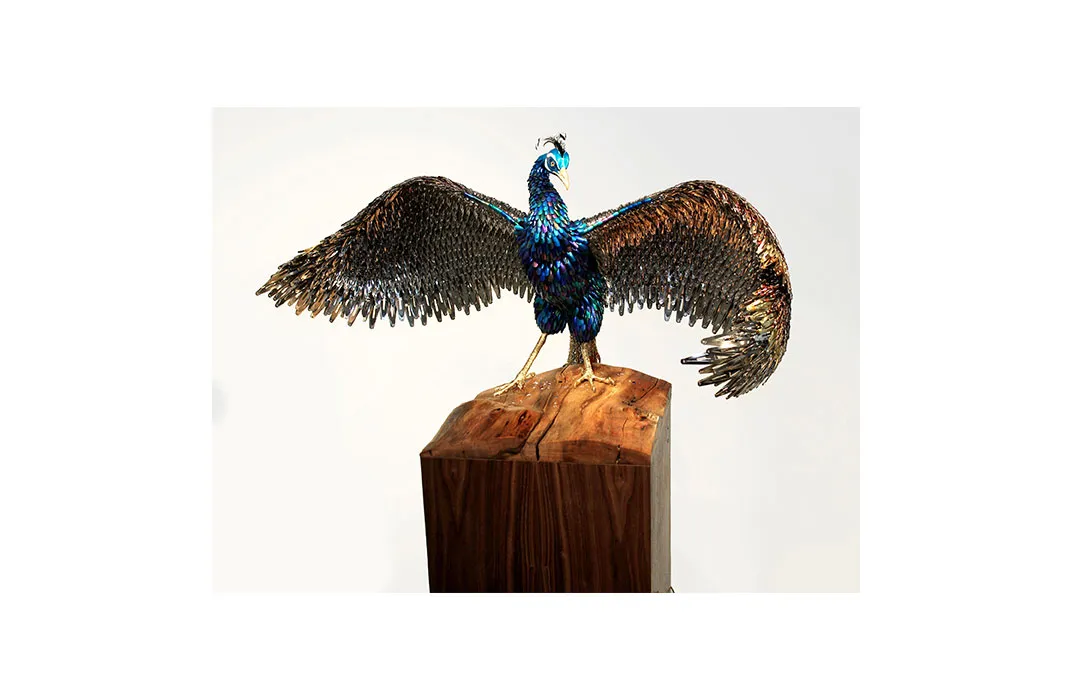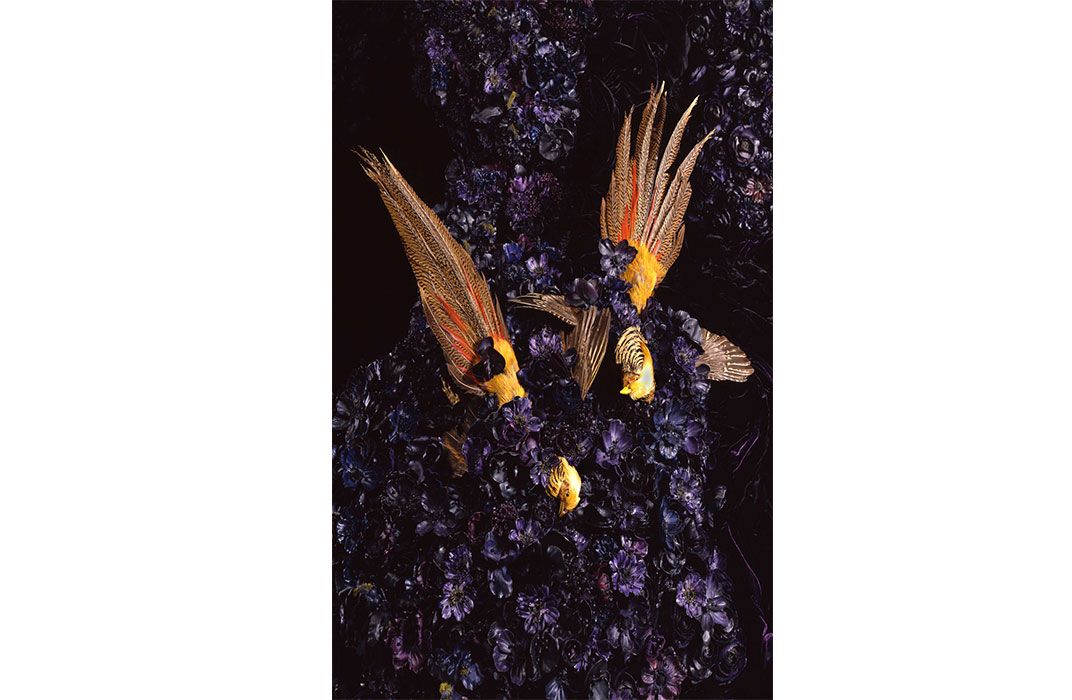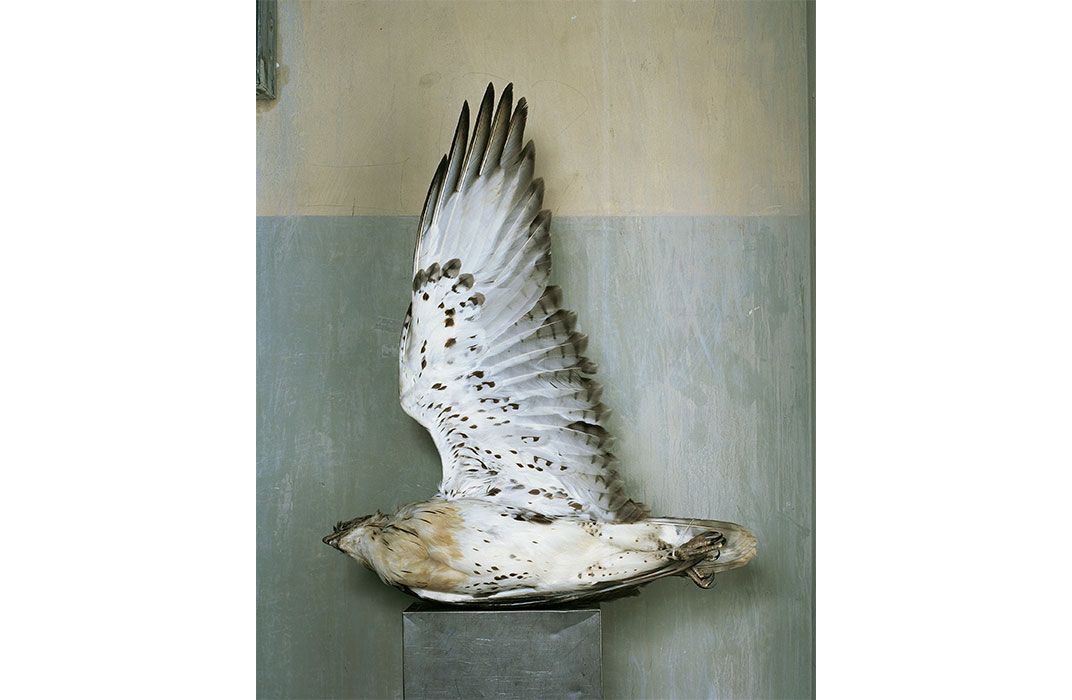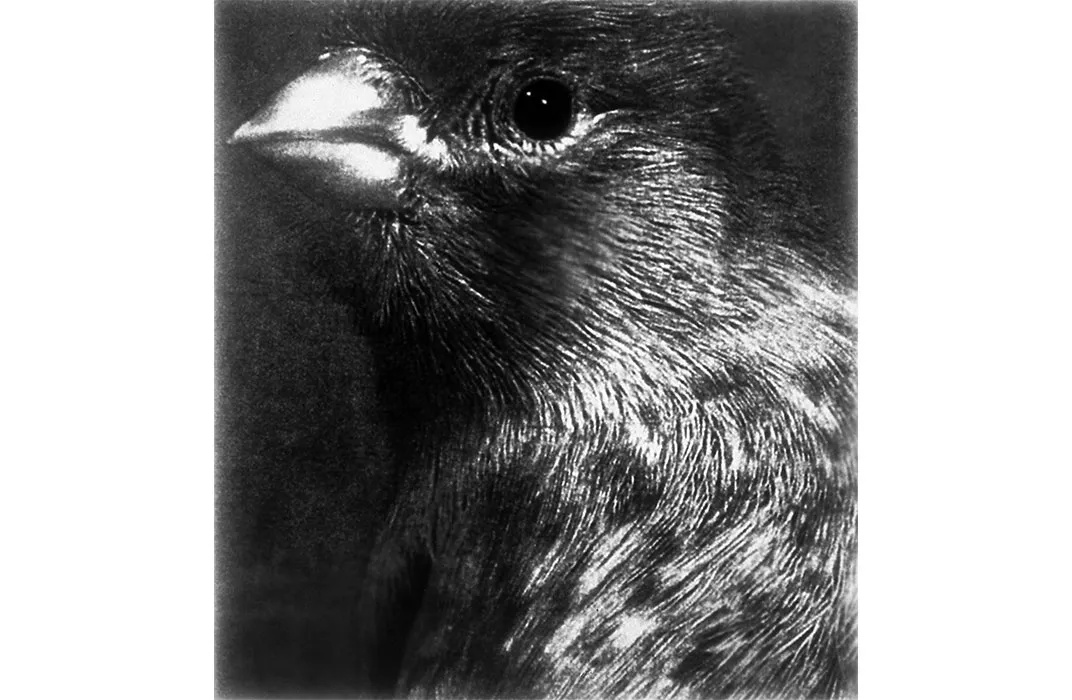The Threatened Birds in These Artworks Might One Day Go the Way of the Dodo
The Smithsonian American Art Museum’s exhibition explores mankind’s relationship to birds and the natural world
A little more than a century ago, skies darkened for hours as millions of passenger pigeons migrated up and down the eastern United States, a phenomenon so removed from contemporary times that it’s hard to fathom. The ornithologist and artist John James Audubon described an encounter with the birds, writing, “the light of noon-day was obscured as by an eclipse.” Once the most populous birds of North America, commercial exploitation of pigeon meat on a massive scale and deforestation of the birds’ habitat led to their demise. The last passenger pigeon, Martha, died in September of 1914 at the Cincinnati Zoo.
“I try to imagine the abundance of birds that would have filled the skies in Audubon’s day when he was painting the birds of America,” says Joanna Marsh, the curator of contemporary art and organizer of the exhibition “The Singing and The Silence: Birds in Contemporary Art,” which opened last week at the Smithsonian American Art Museum. “It really only survives in remnants today, but the impulse to search for what is lost and what can still be recovered environmentally is incredibly palpable and I think that is one of the things that inspires the artists and certainly has inspired me.”
The story of the passenger pigeon highlights the deteriorating situation of birds in today's environment. Since the 1500s, more than 150 bird species around the world have been recorded as extinct. And one in eight species—more than 1,300— is currently threatened with extinction, according to BirdLife International. In the last 20 years, 80 to 90 percent of the population of the barn swallow and purple martin, both common birds, were wiped out. What is causing this rapid decline? Climate change, chemicals and unsustainable agriculture are a few driving factors.
In an effort to bring attention to the plight of birds— and to honor the 100th anniversary of Martha’s death, along with the 50th anniversary of the 1964 Wilderness Act—the museum's exhibition features 46 pieces of artwork by artists David Beck, Rachel Berwick, Lorna Bieber, Barbara Bosworth, Joann Brennan, Petah Coyne, Walton Ford, Laurel Roth Hope, Paula McCartney, James Prosek, Fred Tomaselli and Tom Uttech.
“In many ways, these artists are heirs to Audubon’s legacy, with one foot in the art world and one in the natural world,” Marsh says. “The exhibition emphasizes both the ecological and ornithological concerns, and the allegorical and spiritual ideas.” Through photography, painting, sculpture installations and collages, the artists explore many themes, perhaps the most prominent being the interaction between contemporary culture’s relationship with the natural world and the importance of environmental consciousness.
The title of the show takes its name from the last stanza in the memorable poem “The Bird at Dawn” by Harold Monro. “At its core, this exhibition is about what birds tell us about ourselves and our connection to our planet,” Marsh says. Centered near the entrance stands a tree covered in amber colored passenger pigeons, encased in a glass hexagon. As you walk around, the two-way mirrors give the illusions of many trees and birds as if you’re in the forest. And yet, your reflection is still there, representative of the human presence in the natural world.
One of the most commonly known extinct birds, the Dodo, is represented in the exhibition through the work of artist David Beck. In one of his sculptures, he builds a miniature museum, the inside housing the bare bones of the bird, while the outside is covered in brown and orange bird feathers. The Dodo was terribly unlucky, Marsh says. “They were ill-equipped to deal with the colonizers who arrived on the Mauritius islands and were suddenly hunted mercilessly.” In a matter of 80 years, humans had decimated the Dodo’s existence.
But beyond the message of conservation, the exhibition also explores ideas of human spirituality, culture, history and sexuality as represented through birds. In Walton Ford’s painting “Eothen,” which in Greek means “from the east,” he uses imagery of a peacock with a smoldering train to represent conflicts waged in the Middle East over the centuries. Another artist, Laurel Roth Hope, combines fake fingernails, nail polish, barrettes, fake eyelashes and jewelry to create a sculpture of peacocks.
“Birds are a vivid expression of life,” Marsh says. “I’m glad we could bring together the science world and the art world and I hope people will be inspired by these works.”
“The Singing and The Silence: Birds in Contemporary Art” is on display through February 22, 2015 with a series of programs in conjunction. On November 6, Joanna Marsh will lead an in-gallery-tour. On November 13, the museum will screen the film Curious Worlds: The Art & Imagination of David Beck, followed by a Q & A with Beck and director Olympia Stone. Marsh will give another talk on the exhibition and her curatorial process on December 11 and on January 10, and the museum will host a family festival featuring bird-themed crafts. On January 13, Marsh and Pete Marra, head of the Migratory Bird Center at the Smithsonian’s National Zoological Park, will examine the overlap between art and nature and on February 3, artists Coyne, Hope and Tomaselli will talk about their work and creative processes.
/https://tf-cmsv2-smithsonianmag-media.s3.amazonaws.com/filer/cb/8c/cb8c42c2-7244-4f84-a30b-e2dc90c27ee4/coyne_untitled1180beatrice_fullview.jpg)
/https://tf-cmsv2-smithsonianmag-media.s3.amazonaws.com/filer/8d/0c/8d0c128d-1ac8-464d-8f15-66cbe4b3545d/uttech_enassamishhinjijweian.jpg)
/https://tf-cmsv2-smithsonianmag-media.s3.amazonaws.com/filer/63/c3/63c3633a-e8da-4ed1-bd1f-db57bf8198a2/tomaselli_migrantfruitthugs.jpg)

/https://tf-cmsv2-smithsonianmag-media.s3.amazonaws.com/filer/ab/e9/abe96264-5683-4bf2-907f-712b4a570de5/mccartney_vermilion.jpg)
/https://tf-cmsv2-smithsonianmag-media.s3.amazonaws.com/filer/0b/d6/0bd66a5e-9286-4d64-8cfe-86fe755418c1/mccarthney_winter_bluebirds.jpg)
/https://tf-cmsv2-smithsonianmag-media.s3.amazonaws.com/filer/f4/23/f4236ce0-bb70-4899-831c-d2a503b8d0d8/ford_la-historia-me-absolvera.jpg)
/https://tf-cmsv2-smithsonianmag-media.s3.amazonaws.com/filer/d8/38/d8385cb9-792b-4c76-a0b4-1d0ba6710319/ford_fallingbough.jpg)

/https://tf-cmsv2-smithsonianmag-media.s3.amazonaws.com/filer/ab/a5/aba5d881-237a-4497-9754-5d8fe6b560c4/beck_dodo_drawing.jpg)

/https://tf-cmsv2-smithsonianmag-media.s3.amazonaws.com/filer/bb/c2/bbc2fcfa-429e-4f43-8119-814677b87d06/brennan_mallard_egg.jpg)
/https://tf-cmsv2-smithsonianmag-media.s3.amazonaws.com/filer/97/c2/97c2c486-6e4e-4333-83c8-1427aab4bec7/bosworth_indigo_bunting.jpg)
/https://tf-cmsv2-smithsonianmag-media.s3.amazonaws.com/filer/a1/c4/a1c40eec-014c-429c-bc5e-5f9ea25e0a92/bosworth_common_yellowthroat.jpg)

/https://tf-cmsv2-smithsonianmag-media.s3.amazonaws.com/filer/30/a2/30a2822b-962e-4c10-9ab8-945452bca5b6/bieber_bird-chest.jpg)
/https://tf-cmsv2-smithsonianmag-media.s3.amazonaws.com/filer/ca/42/ca42dd78-aa76-432c-8e7f-362a04c697c7/berwick_zugunruhe_installationview1.jpg)
/https://tf-cmsv2-smithsonianmag-media.s3.amazonaws.com/filer/cc/b4/ccb41dd9-d9e9-4e8d-a915-91dddf056e71/beck_dodoes_ensuite_6overshoulder.jpg)